Interlaced cubes
In a cube whose edges are made of two contiguous rods, a diagonal made of three rods and two balls can be fitted. This diagonal is about 2.18% longer that it should be, but the structure is able to absorb the excess with a slight deformation, making the top and bottom faces of the cube slightly rhombic. If eight cubes are built together in this manner (blue), another two cubes (red and yellow) could be «hung» from the balls in the diagonals, all of them interlaced:
I saw this construction for the first time in the archive of user Eric-magnet at flickr.
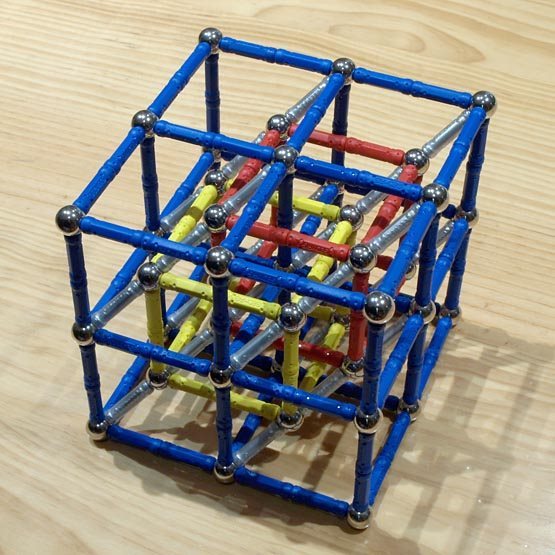
Interlaced cubes, edge 2, view 1
223 pieces: 43 balls, 180 rods (1.22 kg)
|
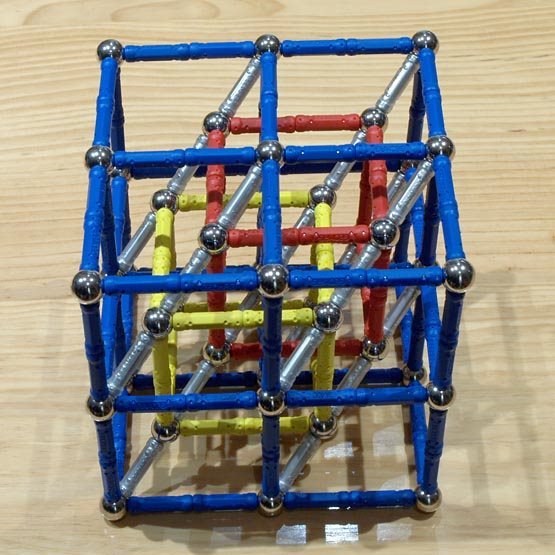
Interlaced cubes, edge 2, view 2
|
Similarly, if we build cubes whose edges are made of three contiguous rods, the diagonals made of four rods and three balls turn out 3.39% shorther than they should be, but they can be fitted by deforming the cube. When we now build eight cubes together, three interlaced cubes can be hung:
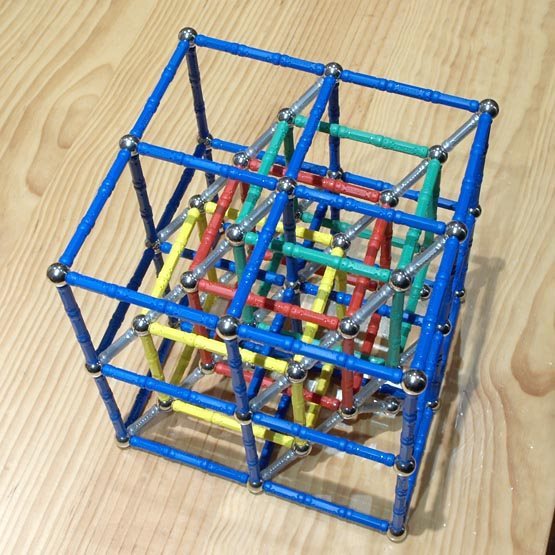
Interlaced cubes, edge 3, view 1
353 pieces: 51 balls, 302 rods (1.86 kg)
|
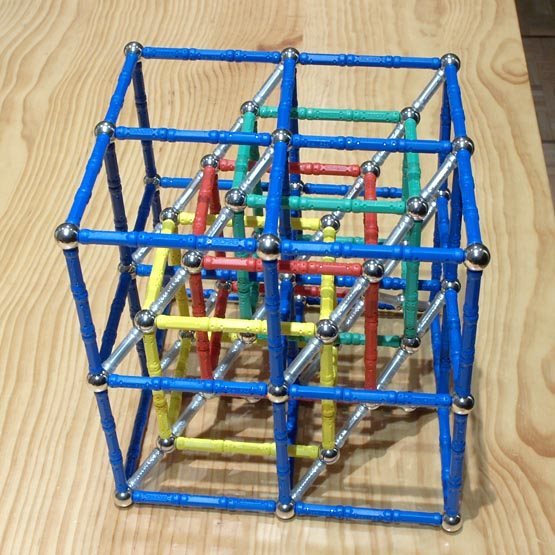
Interlaced cubes, edge 3, view 2
|
These cubes can be stacked to make towers, but the required deformation make them quite unstable, and very hard to build straight:

Tower of interlaced cubes, edge 3, view 1
1397 pieces: 181 balls, 1216 rods (7.27 kg)
|
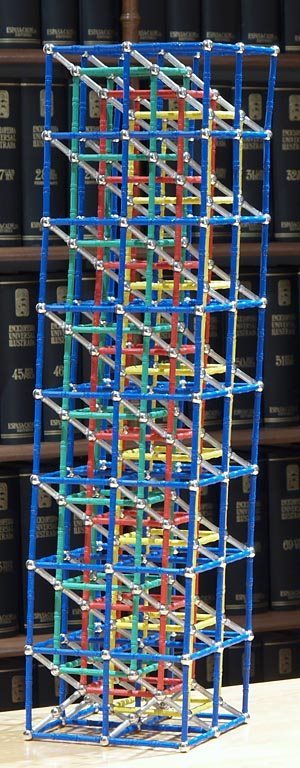
Tower of interlaced cubes, edge 3, view 2
|